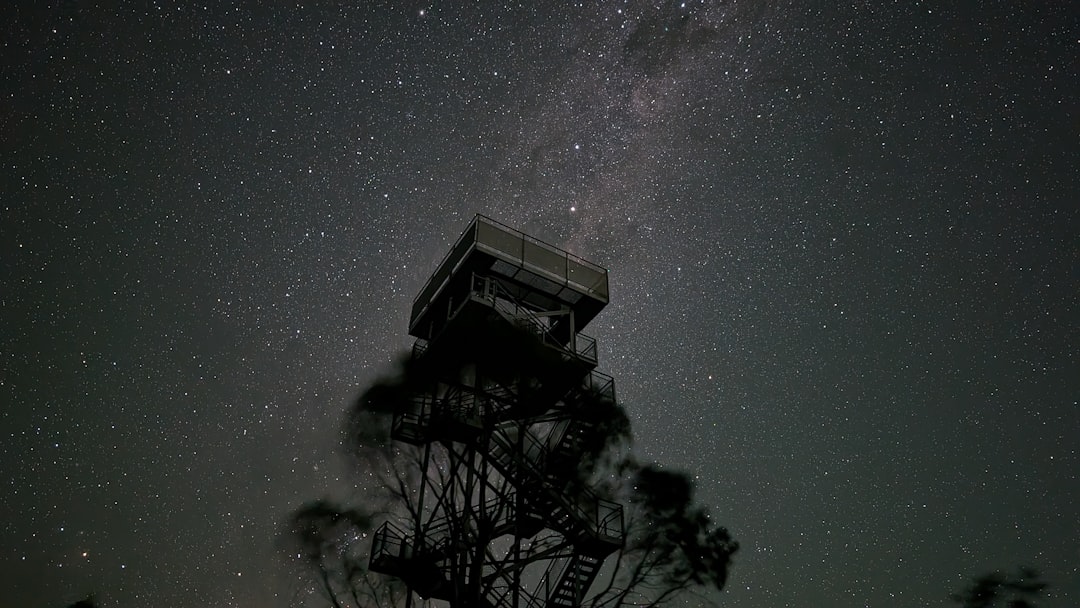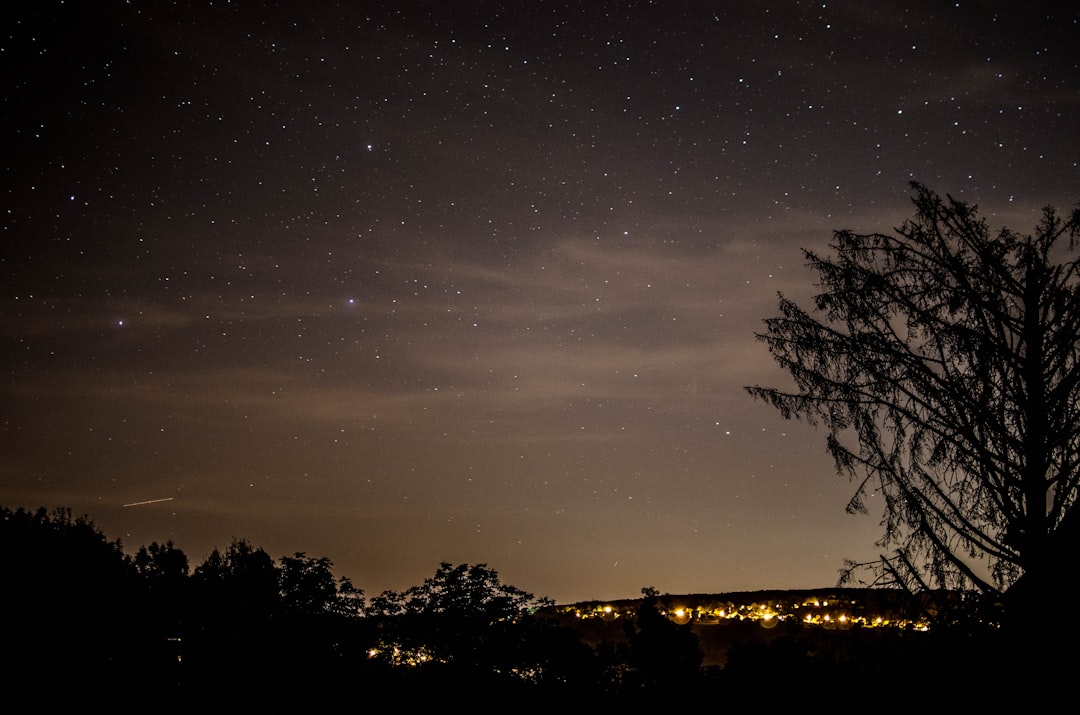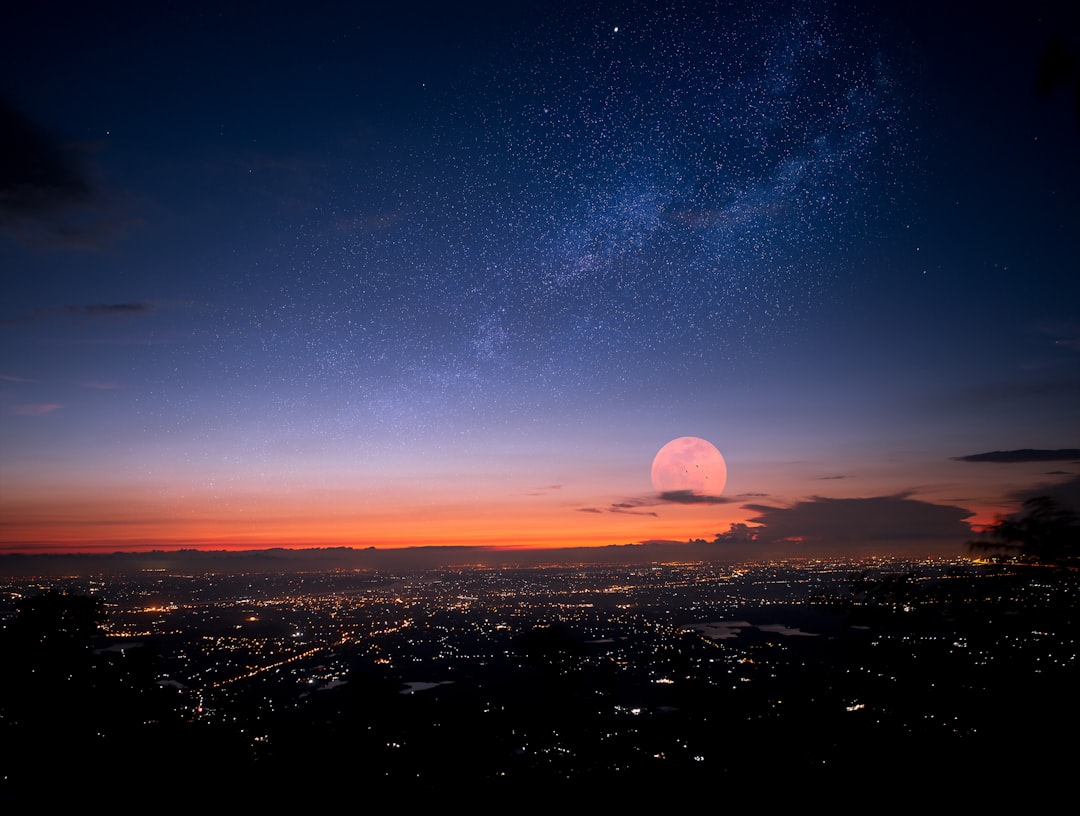When we look at a photograph of a city at night, most of us expect to see iconic skylines bathed in electric light—the glow of apartment windows, the red eyes of taillights, and the vibrant neon signs illuminating the urban landscape. But for French photographer Thierry Cohen, these artificial lights conceal something even more profound and beautiful: the night sky as it should be seen, uncorrupted by light pollution. Through his critically acclaimed series “Darkened Cities”, Cohen reveals an invisible aspect of our cityscapes—the dazzling stars we can no longer see.
In a world where over 80% of the global population lives under light-polluted skies, Cohen’s work is a poetic reminder of what we’ve lost. His hauntingly beautiful images show major cities across the world—New York, Paris, Hong Kong, Tokyo—shrouded in darkness, lit only by the constellations that would be visible above them if modern lighting were stripped away.
The Concept Behind “Darkened Cities”
Thierry Cohen’s “Darkened Cities” aren’t digitally imagined dreamscapes. They are meticulously crafted composite photographs that juxtapose two real moments captured under vastly different conditions. The result is a breathtaking simulation of what these cities would look like if we could see the stars unobstructed from urban centers.
The artist follows a precise process. First, he photographs cities during the day to capture the architectural and spatial components of urban environments. Then, he determines the exact time, angle, and latitude of where he stood during the shot and travels to a location devoid of light pollution, usually in a desert, to photograph the night sky at that precise angle and timing. Using this data, he overlays the desert starscape onto the cityscape, yielding stunning, eerily quiet urban scenes illuminated solely by celestial light.

Reclaiming the Night: Technical Mastery
Cohen’s attention to detail and commitment to authenticity set his work apart from both traditional astrophotography and digital manipulations. Every star featured in these images is true to its astronomic position for the location and time recorded in the city shots. This precision has made his photographs not just pieces of art but visually accurate representations of a reality hidden by city lights.
His process involves:
- Exact geographical alignment: Mapping sky positions with astronomical data to match the latitude of the city.
- Precise time synchronization: Ensuring the rotation of Earth is accounted for, so the stars align correctly with the time of day when the city was photographed.
- Post-processing restraint: Cohen avoids excessive digital manipulation, enhancing only what would naturally be present.
This meticulous approach reinforces his message: the night sky, as ancient and ever-present as it is, has become both forgotten and invisible in urban life.
Light Pollution and the Human Condition
“Darkened Cities” offers more than aesthetic pleasure. It serves as a profound commentary on how light pollution disconnects urban dwellers from nature and the cosmos. By blanketing our skies with artificial brightness, we’ve lost one of our most ancient sources of wonder and spiritual grounding—the stars.
In an interview, Cohen remarked, “To show the stars is to go back to the origin of photography, to observation, to the original fascination… it’s to link the modern world to the eternal one.” His work evokes questions about our environmental impact and psychological estrangement in over-illuminated cities.
Further research supports his artistic message. Studies in chronobiology show that constant exposure to artificial light disrupts circadian rhythms, adversely affecting sleep, mood, and overall health. Cohen’s photographs do not shy away from these implications—they invite viewers to contemplate what we’ve willingly traded away in our pursuit of modern convenience.

A Global Series with Local Significance
Thierry Cohen chose cities of varying continents, cultures, and significance for his series. Locations include:
- New York City: With its ever-glowing skyline, the darkened version appears surreal, its skyscrapers silhouetted against a celestial backdrop.
- Paris: The romantic capital looks solemn and introspective, bathed not in street lights but in moonlight and constellations.
- Tokyo and Shanghai: As symbols of modernity, these cities’ celestial counterparts reflect the paradox of progress and loss.
- Rio de Janeiro: Known for its vibrance and energy, its peaceful, star-lit portrait takes on a philosophical tone.
By applying his method to cities around the globe, Cohen subtly universalizes his message: we are all under the same sky, though many of us no longer see it. His images become a cultural mirror, each city reflecting not just architectural uniqueness but shared existential loss.
Art as Environmental Advocacy
While Thierry Cohen does not label himself an environmental activist in the traditional sense, his work acts as a striking form of visual advocacy. It raises awareness about a widespread yet often overlooked form of pollution: artificial light. Initiatives such as International Dark-Sky Association have cited art like Cohen’s as crucial in influencing public perception and policy around light pollution.
His images also find resonance in contemporary urban planning and environmental protection discourse. The growing trend of “dark-sky reserves,” where regulations keep artificial light emissions low, echoes the spirit of Cohen’s work. His visualizations provide a hypothetical outcome of what cities might resemble if stricter policies were adopted.

Public Reception and Critical Acclaim
The art and photography world has widely praised “Darkened Cities” for its originality, execution, and poignancy. The series has been featured in institutions and galleries ranging from Paris Photo to the Danziger Gallery in New York. Critics have lauded Cohen’s ability to blend visual beauty with ecological awareness, calling the work “meditative,” “visionary,” and “urgently relevant.”
Viewers often describe an emotional response when encountering Cohen’s work. Common themes include a sense of wonder, introspection, and even sadness—a longing for harmony between human civilization and the natural world that seems increasingly distant.
The Legacy of “Darkened Cities”
“Darkened Cities” is more than a photographic project; it is a lasting statement on the intersection of technology, nature, and perception. Thierry Cohen invites us not just to look but to see—to recognize the planetary beauty that lies beyond and within our constructed realities. His work is not about rejecting modern life, but about reconciling it with the deeper rhythms of the cosmos.
By restoring our sight—if only through his lens—Cohen gives us a gift: the sky we have forgotten, and a moment to reconsider what it means to live beneath it.
As urbanization continues to accelerate, Thierry Cohen’s artistry becomes increasingly relevant. His images are a quiet yet powerful call to action: to dim the lights, look upward, and remember the magnitude of what still surrounds us, waiting patiently in the dark.

